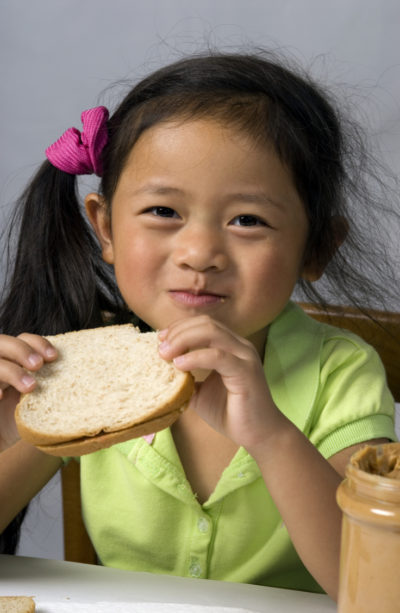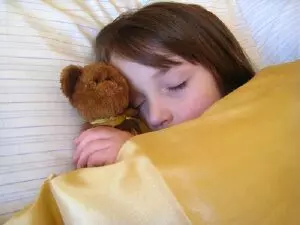Exercise & T1D: reduce bg swings with strategies for before, during & after physical activity
As discussed in the previous article, How Exercise Impacts Blood Glucose, it can be challenging to adjust for the decrease in blood glucose that we usually see with exercise. But does physical activity always lead to lower blood sugar? Knowing the answer - plus knowing what to do before, during and after physical activity - may help you reduce swings in both directions.
When Does Exercise NOT Lower Blood Glucose?
It's generally understood that physical activity lowers blood glucose. This is true when it comes to aerobic exercise: exercise that is longer in duration and mild to moderate in intensity. Aerobic exercise involves endurance, and includes activities such as running or cycling. Aerobic exercise tends to lead to a drop in blood sugar.
Anaerobic exercise, on the other hand, is characterized by brief periods of high-intensity activity followed by longer periods of rest or recovery. Anaerobic exercise includes activities such as hockey, sprinting and HIIT (high intensity interval training). Due to the release of adrenaline (a hormone which creates insulin resistance), anaerobic exercise tends to cause a rise in blood glucose. You may also see this happen when your child is participating in a game versus a practice. Even though she may have experienced a drop in blood glucose while practicing the sport, she could experience an increase in blood glucose while competing in the sport (due to the release of adrenaline).
This difference means that, in order to reduce both highs AND lows, we need to adjust our strategy based on the type of activity our T1D kids participate in…
Different Strategies for Different Situations

Blood Glucose Monitoring & Physical Activity
Since all kids are different, figuring out how a particular activity affects your individual child can be challenging. Blood glucose monitoring is essential for adjusting for exercise with an active child with diabetes; it allows you to notice glucose trends. It’s important to keep good records, especially when the activity is new. We suggest writing down things like the timing, intensity and duration of the activity, as well as what was done to try to keep blood glucose in the target range. It’s important to check blood glucose before, after, and every ½ hour during exercise, paying particular attention to the direction of blood glucose changes. It’s also very important to monitor blood glucose for several hours after intense exercise or exercise lasting longer than 90 minutes, including at bedtime and in the middle of the night. Remember, nighttime lows are very common after a day of strenuous activity.
Strategies for Before & During Exercise
So far we know that sometimes physical activity raises blood glucose, and sometimes it lowers it; we know that sometimes your child will need extra carbs before physical activity, sometimes after the activity, sometimes before, during and after; sometimes they may even need insulin during an activity. Discouraged yet? Don’t be! Your child will engage in some type of activity that’s just part of being a kid, and balancing blood glucose and exercise is manageable.
But what can we actually DO before our child heads to the hockey rink, what can our child do when she’s on the soccer field? There are a few strategies that can help manage the swings, making exercise more fun and less stressful for everyone:
1. Dr. Michael Riddell's "One Gram per Kilogram per Hour"
This first (and our favourite) strategy comes from the exercise physiology / diabetes metabolism work of the global authority on exercise and diabetes, Dr. Michael Riddell¹ (from York University... Go, Canada!) His research has informed a recommendation to consume an extra
1 gram (g) of carbohydrates for each kilogram (kg) of body weight for each hour of moderate to intense exercise.
Example 1:
If your child weighs 20 kg, you would give her 20g of carbs for each hour of exercise. Broken down, that would be 10g every half hour, or 5g every 15 minutes.
Example 2:
A child who weighs 32 kg may need 32g of extra carbs for an hour of moderate to intense physical activity (equivalent to 16g every half hour or 8g every 15 minutes).
This formula provides an educated starting point for how many extra carbs your child may need for exercise. Try it out and assess the result to see if your child needs this amount of extra carbs, more or less. If, as in example 2 above, your child is consuming 8g of extra carbs every 15 minutes during exercise and is still experiencing lows, perhaps she needs 10g every 15 minutes for that activity. Alternately, if she is consuming 8g of extra carbs every 15 minutes during exercise and her blood glucose is high following the activity, you could try 6g every 15 minutes for that activity.
Note: It’s preferable to provide the extra carbs throughout the activity (in 15-30 min increments) rather than in a “lump sum” pre-exercise, to avoid the substantial increase in blood glucose which may happen if your child consumes too many carbs before the activity starts. High blood glucose during the activity may impact how she feels and her ability to perform athletically.
Tips from the Trenches
When my son wants to participate in a spontaneous activity (such as jumping on the trampoline, riding his skateboard, etc) he knows to grab extra carbs for the time period that he plans to be doing that activity for. If he usually jumps for ½ an hour with his friends on the trampoline then he’ll grab 22 extra carbs (he weighs 45 kg) as he’s running out the door. He also makes sure that the carbs are fast-acting or high glycemic ( examples would be non-fat candy, white bread, pretzels, sports drinks, etc). That way his body will have those extra carbs available right away when he needs them. If he were to have something that’s slow-acting or low glycemic (like ½ of a cheese sandwich on whole grain bread or high fat ice cream) then the food would take too long to digest and he would probably have a low during exercise. For more information see ‘Choosing the Right Carb for the Job’ section below. ~Danielle
2. Gary Scheiner’s Carb Replacement Table
(Appendix D found at the back of Gary Scheiner’s book “Think Like a Pancreas”)
The second strategy involves giving extra carbs for every 60 minutes of a given activity, as indicated in a table of values (which is broken down by body weight).
Example 1:
If your child weighs 23 kg, and is about to play soccer (practice), you would give her 13-17g of extra carbs for every hour she plays.
Example 2:
A 45 kg child who wants to go biking at a moderate pace, will need to consume 24-30g of extra carbs for every hour that he exercises.
This strategy does account for the different levels of intensity involved in different physical activities. However, your child may enjoy an activity that is not listed in the table. In this case, you may pick a similar activity on which to base your strategy.
Extra Carbs or Less Insulin?
Once you have used one of the above strategies to calculate the approximate amount of extra carbs your child needs for a given activity, you may either:
(or you may use some combination of the two strategies)
If you choose to give less insulin for an activity that is planned immediately following a meal, instead of your child eating even more food after the meal, you may choose to subtract the insulin equivalent to the extra carbs from that bolus for that meal. For example, if your 40 kg child wants to go tobogganing after supper, you could subtract insulin equivalent to 40 carbs (which would cover 1 hour of exercise) from the supper insulin. If she eats 60 carbs, you would only give insulin for 20 carbs instead of the full 60.
Important Notes about Adjusting Carbs and Insulin:
Choosing the Right Carb for the Job
In addition to choosing the right amount of extra carbs, it is also important to be aware of the type of extra carb you use to manage exercise. A food’s Glycemic Index (GI) indicates how quickly it is digested – and, as a result, how quickly it raises blood glucose. High GI foods are broken down quickly, resulting in a fast rise in blood glucose; lower GI foods are broken down more slowly, resulting in a more moderate and longer-lasting rise in blood glucose.
If your child is participating in spontaneous activity for which you had little advance notice (for example, little ones running around the house, or older ones rushing out for an impromptu bike ride), a quick-acting, high GI carb (similar to what you would use to treat a low), consumed immediately before or during the activity, may be necessary to avoid a low. This type of carbohydrate starts working very quickly. It is also used up very quickly, so your child will have to consume high GI foods often throughout the activity.
If, on the other hand, your child is participating in a planned activity, it may be beneficial to give a slower-acting (medium GI) carb (like fruit and yogurt, or a whole-grain granola bar) 60-90 minutes prior to the activity. This is an option if you are subtracting carbs from a meal pre-activity and you don’t want the blood sugar to spike too high but want the food to be available for the body to use during exercise. You may still need to give high GI foods throughout the activity to prevent a low.
If you check your child’s blood glucose during an activity and he is on the lower side, it may be wise to choose a high GI carb (a sports drink, for example) for extra carbs to prevent a low.
Strategies to use After Exercise
What Happens to Blood Sugar After Physical Activity Ends?
In addition to the challenges of keeping blood glucose as close as possible to the target range during exercise, the other great challenge is keeping blood glucose in range for the hours following physical activity. An important thing to note is that when the body is recovering from moderate to high-intensity exercise (either aerobic or anaerobic), the muscles will continue to pull glucose from the blood to replenish their stores. Therefore, blood glucose may continue to drop after the exercise is done… for up to 30 hours post-exercise, depending on the kind of exercise that was performed, as well as on individual differences. To further complicate things, the body becomes more sensitive to insulin following exercise, so a smaller amount of insulin is usually needed for basal needs and/or to cover carbs. This means your child has an increased chance of low blood glucose after they leave the rink, the field, or the skate park.
Tips from the Trenches
When my son has finished an activity where he has really worked hard (ie. sweating, out of breath, etc.), he will make sure to give himself less insulin with his pump than usual for the next 1-2 meals. If he uses the usual amount, he will go low because his body is using insulin more effectively (known as increased insulin sensitivity). As well, if the activity is later in the day or has lasted the whole day (skiing), he will have a bedtime snack without giving insulin for it to prevent a nighttime low. ~Danielle
It is also interesting to note that when a certain activity is performed regularly, the muscle group involved in that activity will adapt by storing more fuel within the affected muscles. As a result, blood glucose will not be affected as much as when that activity was first started.
Tips from the Trenches
My son will require more extra carbs for a new activity compared to when he has been doing that activity for a while. For example, he requires about 30 extra carbs/hour when we first start our weekly skiing regime compared to needing only 15-20 carbs/hour towards the end of the ski season. ~Danielle
What Do We Do Right After Exercise?
To decrease the risk of low blood glucose during the first few hours after exercise, carb stores should be replenished quickly. Unfortunately, no evidence-based guidelines exist on how many extra carbs to give post-activity; you will need to experiment in order to determine the appropriate amount and timing of extra carbs for your child. This is why it’s very important to keep track of what you have tried, as well as the result.
Some anecdotal guidelines for reducing the risk of low blood glucose after exercise are:

Tips from the Trenches
After a full day of skiing hard, my son’s blood sugar will continue to drop between 5-10 mmol/L over the next several hours. In order to control this (and after much experimentation on our part), he will turn down his background/basal insulin 30% for 4 hours. As well, he is careful to use less insulin for snacks/meals over the next several hours. If his blood sugar is on the high side when we finish, he will not give a correction and probably won’t turn down his basal. If he’s on the lower side, he will have a 15-20 carb snack (not low GI) without giving insulin for it plus turn down his basal. ~Danielle
What Do We Do Overnight?
It’s also very important to note that the risk of having low blood glucose in the night increases substantially after prolonged, moderate/intense exercise during the day.
Strategies to reduce the risk of nighttime lows:

To Make A Long Story Short…
References:
Type 1 Diabetes and Aerobic Exercise: Strategies for Optimal Glycemic Control. Katherine E. Iscoe, BA, Bruce A. Perkins, MD MPH FRCPC, Michael C. Riddell, PhD.
Robertson K, Adolfsson P, Riddell M, Scheiner G, Hanas R. Exercise in children and adolescents with diabetes. Pediatric Diabetes 2009: 10 (Suppl. 12): 154-168.
The above information was reviewed for content accuracy by clinical staff of the Alberta Children’s Hospital Diabetes Clinic.
SHARE THIS ARTICLE